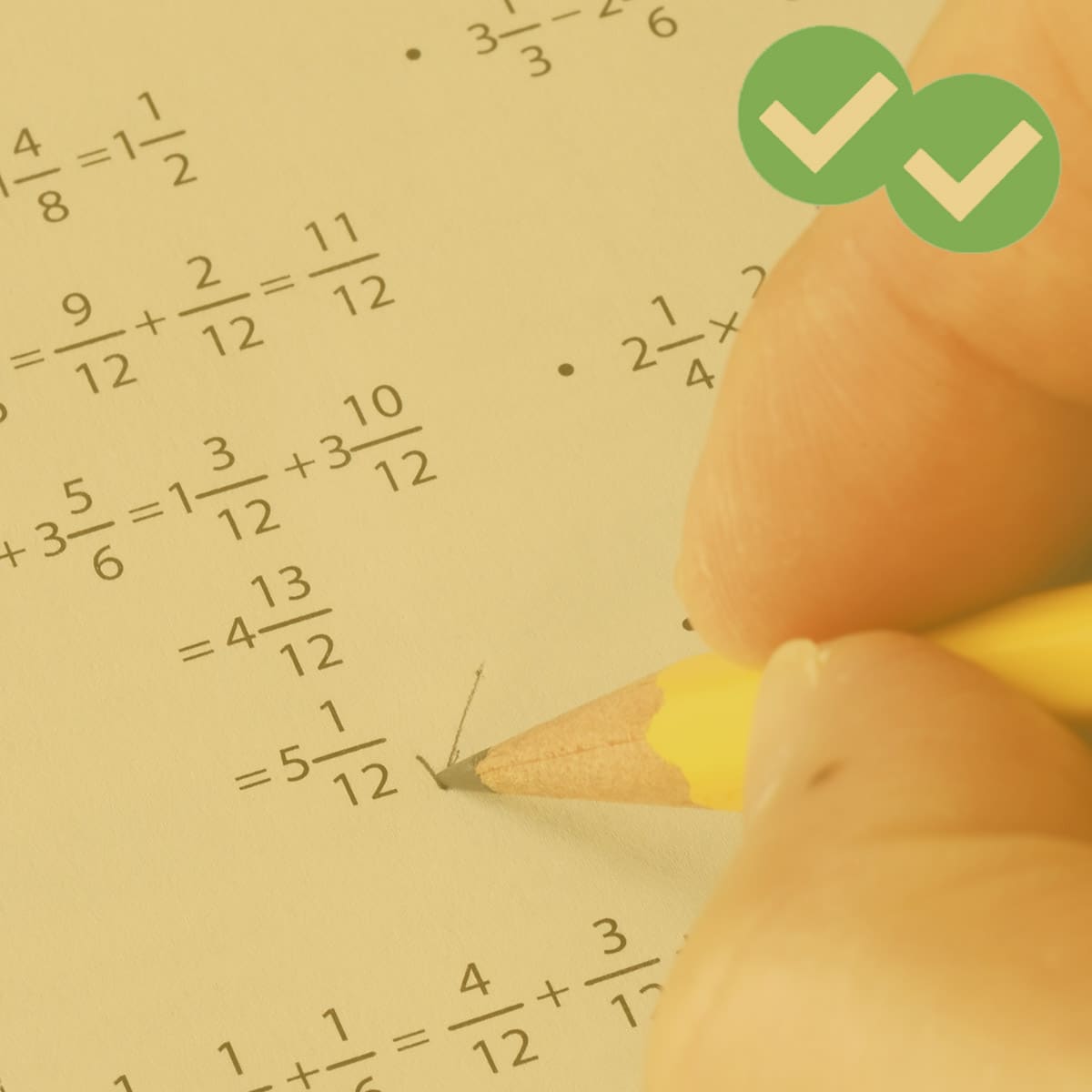
The GMAT Quantitative section contains two types of questions, Problem Solving and Data Sufficiency. On the GMAT, the format of each Data Sufficiency problem is the same: you’re given a question and two statements. It’s up to you to decide whether the statements give you enough information to answer the question.
You don’t need to give the answer to the actual question. You just have to decide whether either statement (or both statements) gives data that is sufficient for finding an answer—hence the term data sufficiency!
What is GMAT Data Sufficiency?
The Data Sufficiency (DS) section is extraordinarily apt for the GMAT, as it tests uniquely managerial skills. It’s often more about logic and critical reasoning than deep mathematical knowledge or ability.
On the GMAT Quantitative section, you get 62 minutes for 31 questions—of these 31 questions, approximately 11-13 will be Data Sufficiency questions. Furthermore, there are two kinds of data sufficiency question: Yes/No and Value questions. We’ll see plenty of each type in the practice problems below. Each practice problem illustrates an essential tip for success.
So let’s get started! The following six tips will help prepare you for these uniquely challenging problems.
GMAT DS Tip #1: Memorize the Answer Choices
The answer choices always consist of the same five options in the same order. You should memorize these now!
- A. Statement (1) ALONE is sufficient, but Statement (2) alone is not sufficient to answer the question asked.
- B. Statement (2) ALONE is sufficient, but Statement (1) alone is not sufficient to answer the question asked.
- C. Both Statements (1) and (2) TOGETHER are sufficient to answer the question asked; but NEITHER statement ALONE is sufficient.
- D. EACH statement ALONE is sufficient to answer the question.
- E. Statements (1) and (2) TOGETHER are NOT sufficient to answer the question asked, and additional data specific to the problem are needed.
Just remember, it’s “One, Two, Both, Either, or None.” Got it?
GMAT DS Tip #2: Consider the Statements Separately
For GMAT Data Sufficiency test problems, you first have to consider whether each statement, by itself, is sufficient. Only if both statements are not sufficient separately would you consider the sufficiency of the information in the combined statements.
One common mistake is to carry over information from Statement (1) into Statement (2). You have to “wipe the slate clean” after looking at Statement (1).
Helpful strategy: Consider whichever statement is the simplest first. That’s because the GMAT loves making Statement (1) a huge, complicated, juicy statement and Statement (2) something incredibly brief. If that’s the case, consider Statement (2) first.
Practice Problem
(1) \(y^2 – x= 0 \)
(2) \(x= 7 \)
While Statement (1) is not really that complicated, Statement (2) is as simple as it gets. So let’s start there. If you know that \(x = 7\), which is of course nonzero, then \(x^2\) is also nonzero. Thus, the other factor \((y – 3)\) must be equal to 0. From there you can find the value of \(y\) (which will be 3; not that you really need that value to answer the problem). So, Statement (2) is sufficient. That helps you to eliminate a bunch of choices (see GMAT DS Tip #3). Now let’s go back to Statement (1). Forget any values of \(x\) or \(y\) from the previous work. If \(y^2 – x= 0 \), then \(x = y^2 \). Substitute this expression into the given equation: \( (y^2)^2(y-3) = y^4(y-3) = 0 \) So, does that tell you what \(y\) is? Well, not exactly. Here, \(y\) could be either 0 or 3. So Statement (1) is not sufficient by itself.
Click here for the answer
B. Statement (2) ALONE is sufficient, but Statement (1) alone is not sufficient to answer the question asked.
GMAT DS Tip #3: Smart Elimination
GMAT Data Sufficiency problems test your logic skills as well as mathematics. Let’s look at a flowchart to help land on a correct answer. This is based on examining Statement (1) first, but a similar flowchart would apply if you looked at Statement (2) first instead.

So let’s talk about the choices, starting at Statement (1).
- Case 1: Statement (1) is sufficient. That means the correct choice is either A or D. From there, it’s a simple check: Is Statement (2) ALONE also sufficient? If yes, then pick D; if not, pick A.
- Case 2: Statement (1) is NOT sufficient. Now the correct choice is one of B, C or E. It can be a bit trickier to find the right choice in this case. Move to Statement (2).
- Case 2A: Statement (2) is sufficient. Great! Choice B is correct.
- Case 2B: Statement (2) is NOT sufficient. Ok, so we can eliminate B, but that still leaves C and E as contenders. Now you have to figure out if BOTH statements taken together could solve the problem. If so, then C is your answer; if not, then select E.
Notice that in either case, the first choice eliminates either two or three choices right off the bat! If you had to guess from that point onward, then your chances have improved greatly.
Here’s a Magoosh video that you might find useful: Data Sufficiency: Eliminating Answers.
Practice Problem
Click here for the answer
D. EACH statement ALONE is sufficient to answer the question.
Consider Statement (1) first. Suppose there are \(x\) widgets, and the price of each one is \(p\). From the given information, then we know that \(xp = 480\). Statement (1) can be interpreted mathematically as follows:
\(x(p-2) = 480 – 160\), or
\(xp-2x = 320\)
Since we know the value of \(xp\), the above equation can be used to solve for \(x\), and then you can derive \(p\) directly from the fact that the product is 480.
Ok, so Statement (1) is sufficient. Thus, we can eliminate three choices, B, C, and E!
Next, look at Statement (2). This one can be translated into mathematics as follows:
\(x(p+1.50) = 480 \cdot 1.25\), or
\(xp+ 1.5x = 600\)
It’s a similar situation, and we’d easily be able to solve for both variables. This is enough to narrow down the correct answer.
GMAT DS Tip #4: Avoid the Temptation to Calculate the Answer
GMAT Data Sufficiency is all about the question, “Could you find the answer?” Suppose the prompt is “What is the value of \(x\)?”, a standard DS problem. Now maybe in the course of solving this problem, you get to a step like \(23x^3 + 144 = 5670\).
The apprentice problem-solver with poor managerial instincts will dutifully work through the several steps necessary for finding the actual value of \(x\)—without access to a calculator, mind you.
On the other hand, the master GMAT test-taker would realize: “From that equation, I could solve for the unknown if I wanted to.” That, in and of itself, answers the sufficiency question right there, and that’s all you need to do! The actual value of \(x\) is irrelevant.
Practice Problem
Click here for the answer
D. EACH statement ALONE is sufficient to answer the question.
First, the given information is very helpful. If we let \(x\) stand for the number of visitors on day 1, then on day 2 we’d have \(x + 3\), and day 3 would be \(x + 6\), etc. By the time day 7 rolls around, there would have been \(x+18\) visitors.
Statement (1) tells you the total number of visitors. Avoid the temptation to solve an equation here. All you need to know is that \(x + (x+3) + (x+6) + \cdots + (x+18) = 126\) is an equation in a single variable. Even better, it’s a linear equation, which is guaranteed to have a solution. It doesn’t matter what the solution actually is; Statement (1) is sufficient.
Similarly, Statement (2) boils down to the equation, \(x+18 = 3x\)—also quite solvable.
Both statements are sufficient individually.
Still struggling to finish the quantitative section on time? Learn about GMAT timing strategy in our Ultimate GMAT Pacing Guide!
GMAT DS Tip #5: Focus on Sufficiency
On the GMAT test, Data Sufficiency problems may be quite misleading, especially those of the “Yes/No” variety. As discussed above, you’re not looking for the answer, but rather could you find the answer? And sometimes that answer is “no.”
Practice Problem
(1) \(4^t\) is an integer
(2) \(4t^2 + 8t = 0\)
Click here for the answer
A. Statement (1) ALONE is sufficient, but Statement (2) alone is not sufficient to answer the question asked.
Statement (1) would imply that \(t = 0, 1, 2, 3, \ldots\) (remember, negative exponents would give fractional values). In others words, \(t\) is decidedly NOT less than 0. But that shows Statement (1) to be sufficient to answer the question.
For Statement (2), let’s do a little factoring.
\(4t^2 + 8t = 4t(t + 2) = 0\)
So we can see that \(t=0\) or \(t = -2\). Since there are two possibilities, one of which is less than zero (-2[/latex]), and the other not less than zero (0), Statement (2) is insufficient.
GMAT DS Tip #6: Testing by Plugging in Numbers
Caution: There are more numbers than just the natural numbers, a.k.a. the counting numbers: 1, 2, 3, 4, and so on. People often forget that a “number” could be positive or negative or zero, could be a fraction, could be a square root, could be \(\pi\) or some other decimal, etc. The possibilities are literally uncountable!
The GMAT loves to test number properties, and one of the greatest pitfalls you could make is to think of “\(x\)” as only a natural number when you go to answer the question.
Practice Problem
(1) \(x\) is positive.
(2) \(|x| \geq 1 \).
Click here for the answer
C. Both Statements (1) and (2) TOGETHER are sufficient to answer the question asked; but NEITHER statement ALONE is sufficient.
This one is definitely tricky! Don’t try to solve anything algebraically; that may lead you astray. Instead, let’s pick some good numbers to plug in each statement.
Let’s start with Statement (1). Plugging in a typical positive number such as 1 or 2 results in a correct inequality. For example, \( 2 \geq \dfrac{1}{2} \). But be careful! What about numbers that are positive fractions? What about \( x = \dfrac{1}{3} \), for instance?
\( (1/3) \geq \dfrac{1}{(1/3)} =3\) would yield an untrue statement!
Therefore, Statement (1) is not sufficient to answer the question.
Ok, so what about Statement (2)? The absolute value gives it away. Think about both positives and negatives here. You already know that a positive number like 2 leads to a true inequality. What about \(x=-2\)?
\( (-2) \geq \dfrac{1}{(-2)} = -0.5\)
This is a false inequality! So we have two opposite conclusions, meaning that Statement (2) is also insufficient.
Well, if you’re following along using the flowchart from GMAT DS Tip #3, you may realize that we still need to check one more thing. Are the two statements TOGETHER sufficient?
If \(x\) is both positive (Statement (1)) AND has absolute value \(\geq 1\) (Statement (2)), then there is enough to prove the given inequality to be true for all such \(x\).
Conclusion and More Data Sufficiency Practice!
GMAT Data Sufficiency problems can be very challenging. However, if you keep the six tips above in mind, you’ll be well on your way to higher and higher GMAT scores on test day!
Try out these additional practice problems from Magoosh!





Leave a Reply